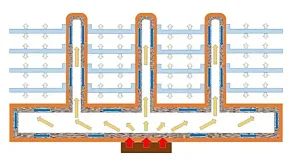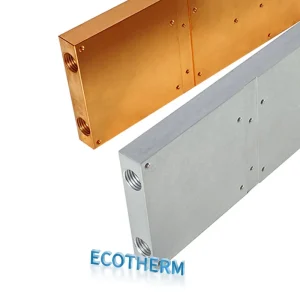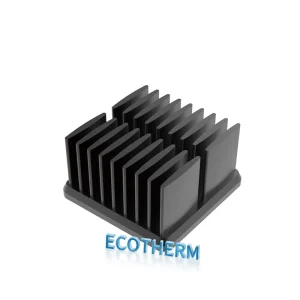Heat Sink Solutions:3D VC (Three-dimensional two-phase Homogeneous Temperature technology)
The heat pipes and VCs mentioned above both belong to two-phase temperature equalization technologies. Heat pipes achieve one-dimensional linear temperature equalization, while VCs enable two-dimensional planar temperature equalization. The 3D VC (Vapor Chamber) introduced below, however, realizes three-dimensional integrated temperature equalization.

3D VC is a heat dissipation technology that connects the vapor chambers of heat pipes and vapor chambers (VCs). Through welding processes, the cavity of the substrate is linked with the inner cavity of PCI fins to form a unified chamber. The chamber is filled with a working fluid and sealed. The working fluid evaporates on the substrate cavity side near the chip and condenses on the fin inner cavity side away from the heat source. Driven by gravity and through loop design, a two-phase circulation is formed, achieving an ideal temperature equalization effect.

3D VC offers heat dissipation advantages such as “high-efficiency heat dissipation, uniform temperature distribution, and hotspot reduction”. It can address the bottleneck needs of heat dissipation for high-power devices and temperature equalization in high heat flux density areas, while also ensuring stronger overclocking performance and system stability after overclocking.
Compared with heat dissipation via heat pipes/vapor chambers (where chip heat is first transferred to the vapor chamber, then to multiple heat pipes, and finally to the fins, involving contact thermal resistance, solder resistance, and the thermal resistance of copper itself), 3D VC achieves direct and efficient heat transfer from the chip to the far end of the fins through its three-dimensional structure. This is accomplished via internal liquid phase change and thermal diffusion, eliminating intermediate thermal resistance barriers.
The manufacturing process of 3D VC
Process Overview
(Taking VC + 4–12 Heat Pipes as an Example):
Method 1: Sequential Fabrication
First, independently fabricate capillary structures on both the VC and heat pipes.
Join the heat pipes and VC into a sealed cavity via brazing or similar techniques.
Proceed with standard VC processes: water injection, vacuum sealing, and subsequent manufacturing steps.
Method Integrated Fabrication
Weld the VC shell and heat pipe shells into a unified structure using brazing, diffusion bonding, stamping, or extrusion.
Fabricate capillary structures within the integrated assembly.
Seal the upper and lower covers to form a closed cavity.
Conduct water injection, vacuum sealing, and follow-up processes.
Process Comparison:
The two methods differ significantly in complexity, yield rate, production capacity, and cost. Method 1 prioritizes modular assembly but introduces interfacial thermal resistances, while Method 2 enhances structural integrity at the expense of higher precision requirements for integrated manufacturing. These divergences directly impact scalability and cost-effectiveness in mass production.
>>>Heat Sink Solutions: Scaling for Data Centers and Chip Evolution
>>>Heat Sink Solutions:Development of Data Centers
>>>Heat Sink Solutions:Vapor Chamber (VC) Cooling Technology
>>>Heat Sink Solutions:3D VC (Three-dimensional two-phase Homogeneous Temperature technology)
>>>Heat Sink Solutions:Liquid cooling heat dissipation technology
>>>Heat Sink Solutions:Other Cooling Technologies (Diamond and Graphene Cooling)
>>>Heat Sink Solutions:Heat Dissipation Path and Development Route of Thermal Interface Materials


